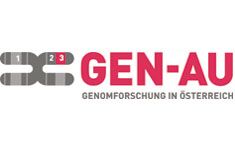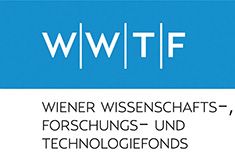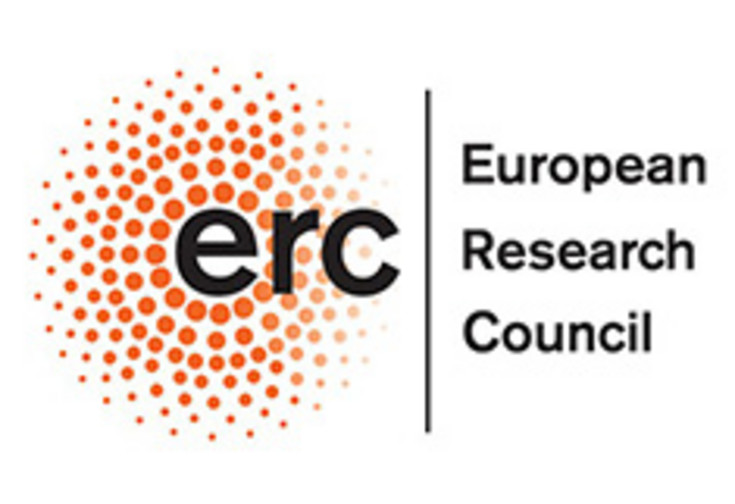Marie-Theres Hauser
Pflanzengenetik
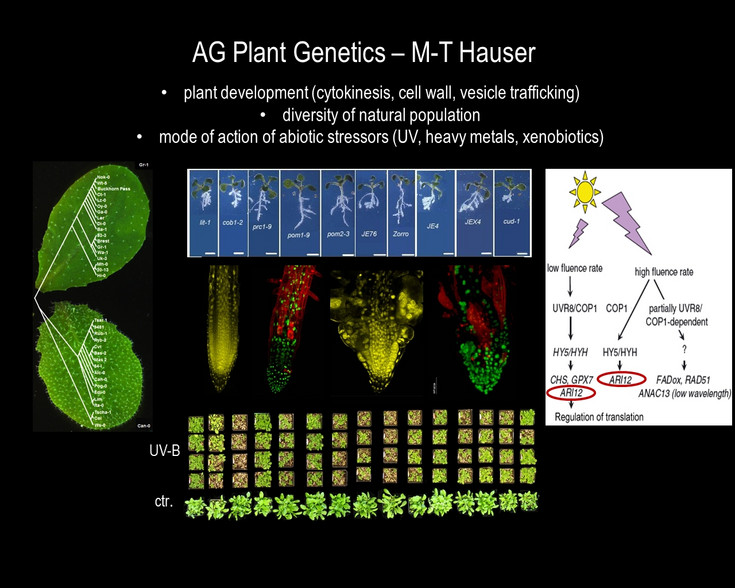
Gebiet
Gebiet
pflanzl. Entwicklungsbiologie u. -genetik, Wurzelmorphogenese, funktionelle Diversifikation von Genfamilien, molekulare Gundlagen von Anpassungsprozessen.
Leiterin: Ao.Univ.Prof. DI Dr. Marie-Theres Hauser
-

by Martina Steyrer
Ausrichtung
Grundlagenforschung in der Entwicklungsgenetik von Pflanzen mit Fokus auf die molekularen Mechanismen der Morphogenese von Wurzeln, Aufklärung der Beziehungen zwischen Zellwandaufbau, Zytoskelett und vesikulären Transport in expandierenden Zellen und während des Zellzyklus (Zytokinese), Analyse von Effekten abiotischer Stressoren (UV-B, Schwermetall, Mykotoxine), molekulare Basis von Anpassungsprozessen, Untersuchungen zur funktionaler Diversifikationen von Genfamilien, Das Methodenspektrum reicht von klassischen und reversen Mutantenanalysen bis zu molekulargenetischen, zellbiologischen, physiologischen und biochemischen Untersuchungen.
Projekte
Projektinformationen
- The role of the Receptor-Like-Kinase 1 family in the regulation of growth and cell wall remodelling during pathogen and heavy-metal stress
- Molecular-genetic analysis of root morphogenesis:
Plant develop a fascinating diversity of different root systems which are adapted to various soil conditions and fulfill important functions as anchoring, water and nutrient acquisition and storage. Although a multitude of data on the structure of roots and their tissues were collected, the genetic basis of the development of this diversity and plasticity is largely unknown and the central aim of our research

Figure 1: Phenotype of 10 days old cell expansion mutants of Arabidopsis thaliana
We are focusing on key parameter of morphogenesis as cell division, pattern formation, cell expansion and differentiation in the model plant Arabidopsis thaliana using classical genetic analyses and molecular-genetic, cell biological and biochemical approaches. We have isolated diverse mutants and genes which are involved in the regulation of cell division (Müller et al., 2002), pattern formation (Helariutta et al., 2000; Scheres et al., 1995) and cell expansion (Hauser et al., 1995, Aeschbacher et al., 1995). At the moment we are cloning some of these genes and initiated secondary screens to identify modulators and further components of the signaling pathways.
Arabidopsis map of mutant phenotypes
- Comparative and functional genomics:
Although many interesting gene could be isolated with classical genetic approaches as mutant analyses, more information on structure-function relationships as well as evolutionary and adaptation processes can be deduced from the analysis of the genetic diversity of particular genes. Together with the research group of Christian Schlötterer (Institute of animal breeding and genetics, Veterinarian University Vienna) we are analyzing a group of genes which are key regulators of leaf hairs (trichomes) and root hairs (trichoblasts) development. We associate the density of trichomes in different Arabidopsis ecotypes/ accessions and closely related species to the genotype of candidate regulators (Hauser et al., 2001). Moreover we identified with a "quantitative trait loci (QTL)" analysis in combiation with association mapping the major locus and the SNP responsible for natural variations in trichome density (Hilscher et al. 2009).
- Functional characterization of gene families:
The goal in the next 10 years of international Arabidopsis functional genomics programs is to identify the molecular function of all genes . As the Arabidopsis genome codes for about 26.000 genes and about 40% of them are members of gene families, one challenge is to characterize the specific function(s) of all members of these gene families. The contribution to this aim of our lab is to characterize gene families for which our lab has at least isolated one member through mutant analyses. In cooperation with other groups we are focusing on a particular class of microtubules associated proteins, a family of putative ubiquitin E3 ligases , Mladek et al., 2003) and two putative chitinases.
- Fusarium virulence and plant resistance mechanisms
- Molecular mechanisms involved in heavy metal accumulation by Salix caprea
- Development of methods:
In the course of the cloning of diverse genes identified by the phenotype of their mutant alleles, we developed several methods which facilitate the chromosomal walking procedure (Hauser et al., 1998; Adhami et al., 1999). Moreover for the expression analysis of genes with high sequence similarity (as members of gene families) we worked out a reliable real-time PCR quantification method (Karsai et al., 2002).
Duplex Analysis Marker
real-time PCR - Home-made SYBR-green mixture
- Mechanisms of short and long term ultraviolet (UV)-B responses:
With the progressive regional and seasonal reduction of the ozone content in the stratosphere the exposure to solar ultraviolet (UV)-B (280 - 315 nm) radiation on Earth’s surface is increasing and will have significant effects on natural and agricultural ecosystems. While low doses of UV-B serve as signal to control growth and development, high doses inhibit growth and trigger leaf necrosis. Moreover high UV-B radiation causes DNA damages such as the formation of cyclobutane pyrimidine dimers (CPDs), pyrimidine-pyrimidone (6-4) photoproducts and induces the production of UV-B protecting flavonoids. Current projects focus on UV-Bs impact on (epi)genome stability and on the identification of regulators responsible for UV-B tolerance.
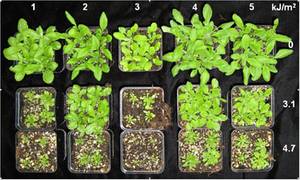
Figure 2: Phenotypic variations of five different Arabidopsis accessions exposed for 10 days to a daily dose of 3.1 or 4.7 kJ/m2 UV-B (Hilscher and Hauser, unpublished)
Publikationen
Forschungsförderungsorganisationen
Kooperationen
- Eva Oburger (BOKU): Wanted: Micronutrients! Phytosiderophore-mediated acquisition strategies in grass crops
- Joe Kieber (University of North Carolina): cell wall signalling
- Lisa Smith (University of Sheffield): CrRLK1Ls
- Crisanto Gutierrez (Universidad Autonoma de Madrid): cell cycle analysis
- Marcel Jansen (University College Cork): UV-B responses
- UV4growth consortium: https://www.cost.eu/actions/FA0906/#tabs+Name:Management%20Structure
- PlantMetals consortium: https://plantmetals.eu/plantmetals-home.html
- MENTOR-PhD-Program: https://mentor.univie.ac.at/our-phd-projects/Claudia
- Doctoral School Agrigenomics: https://boku.ac.at/en/docservice/doctoral-studies/doktoratsschulen/agrigenomics


